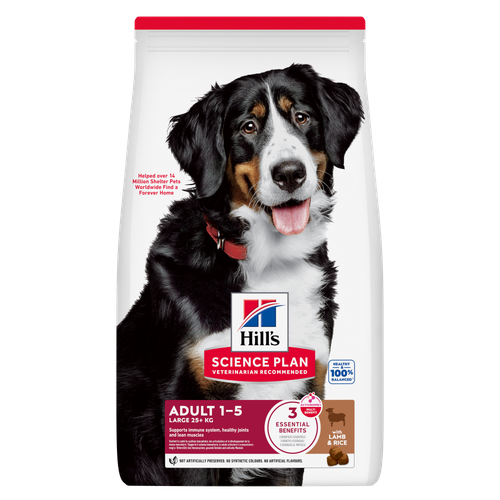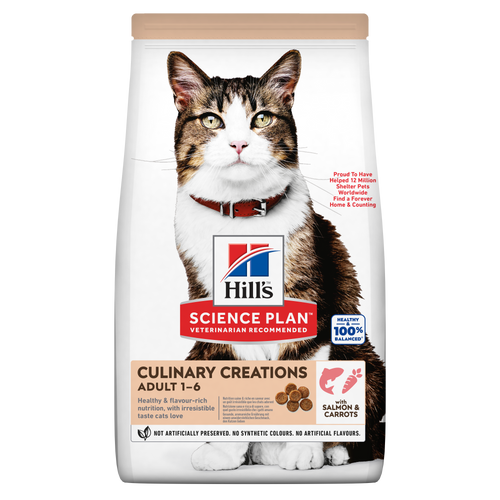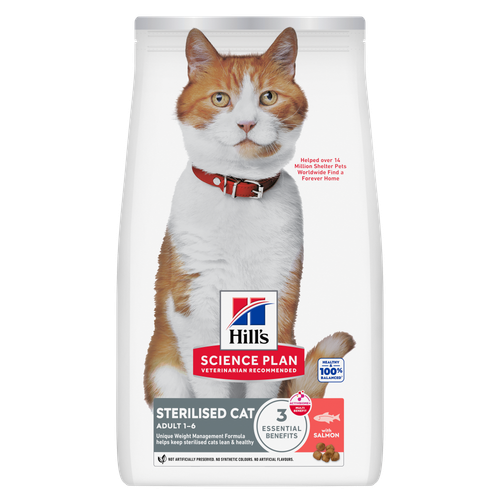
-
Find the right food for your petTake this quiz to see which food may be the best for your furry friend.Find the right food for your petTake this quiz to see which food may be the best for your furry friend.Featured products
 Adult Light Dog Food
Adult Light Dog FoodHill's Science Plan Light Adult Wet Dog Food is a complete premium pet food for adult dogs that tend to gain weight easily. This deliciously smooth loaf is formulated to deliver the appropriate amount of energy to support weight maintenance in adult dogs.
Shop Now Large Breed Adult Dog Food
Large Breed Adult Dog FoodHill's Science Plan Large Breed Adult Dog Food with Lamb & Rice is a complete pet food, specially formulated with ActivBiome+ Multi-Benefit Technology.
This food is specifically designed to fuel the energy needs of large breed dogs during the prime of their life.Shop Now Perfect Digestion Large Breed Puppy Food
Perfect Digestion Large Breed Puppy FoodPrecisely balanced nutrition with Hill's ActivBiome+ prebiotic blend actively contributes to supporting digestive health and overall wellbeing to help your pet feel their best
Shop NowFeatured products CULINARY CREATIONS ADULT CAT FOOD
CULINARY CREATIONS ADULT CAT FOODHill's Science Plan CULINARY CREATIONS Adult cat food with Salmon & Carrots was formulated to provide a great-tasting experience to cats. Its delicious flavour and texture are combine with essential nutrients to support cats' optimal health during the prime time of their life. Specially formulated with high-quality salmon protein, essential taurine for heart health & balanced minerals to support kidneys & bladder.
Shop Now Sterilised Adult Cat Food
Sterilised Adult Cat FoodHill's Science Plan Adult Sterilised Cat Dry Food with Salmon is specially formulated with ActivBiome+ Multi-Benefit Technology. It is a precisely balanced nutrition, tailored to meet the needs of sterilised cats, to help keep sthem lean & healthy.
Shop Now Adult Cat Food
Adult Cat FoodHill's Science Plan Adult Cat Food with Chicken is a complete pet food, specially formulated with ActivBiome+ Multi-Benefit Technology.
This food is specially formulated to fuel the energy needs of cats during the prime of their life.Shop Now -
Dog
- Dog Tips & Articles
-
Health Category
- Weight
- Food & Environmental Sensitivities
- Urinary
- Digestive
- Joint
- Kidney
-
Life Stage
- Puppy Nutrition
- Adult Nutrition
- Senior Nutrition
Cat- Cat Tips & Articles
-
Health Category
- Weight
- Skin & Food Sensitivities
- Urinary
- Digestive
- Kidney
-
Life Stage
- Kitten Nutrition
- Adult Nutrition
Featured articles The Incredible Science Behind Your Pet's Microbiome
The Incredible Science Behind Your Pet's MicrobiomeLearn what your pet's microbiome is, how it contributes to your pet's gut and overall health, and why nutrition is important in maintaining healthy microbiomes.
Read More Pet Nutrition: What Makes "Healthy" Pet Food Healthy? | Hill's Pet
Pet Nutrition: What Makes "Healthy" Pet Food Healthy? | Hill's PetIn people, the right diet is very important. If you are eating the wrong way for your metabolism, activity level, age and lifestyle you could end up with health issues.
Read More Microchipping: The Facts | Hill's Pet
Microchipping: The Facts | Hill's PetThe government has announced that as of April 2016, all dogs in the UK must be microchipped by law.
Read More -


When you’re wandering the aisles choosing a dog food for your canine companion, you may feel a little overwhelmed with all the choices. Like many pet parents, you might be asking yourself the question, “Is wet or dry food better for dogs?”
When it comes to choosing a dog food, it’s important to take into account your dog's overall health, age, and behavioural needs, as well as your own lifestyle. Both wet and dry dog foods can be good choices, but one may work better for your dog or your situation.
The benefits of wet dog food
Wet dog food, often referred to as canned or tinned dog food, has several potential benefits:
Helps to hydrate your dog. Wet dog food is a great source of water, which is essential for keeping your dog hydrated and maintaining many body functions. If your dog doesn't drink much water, or you live in a dry, hot climate, wet dog food can help keep your dog hydrated. Even so, you should still make sure plenty of fresh water is readily available for your dog.
Helps dogs who have trouble chewing. Dogs can have issues chewing hard kibble for a variety of reasons, such as loss of teeth, misaligned jaws, or even a uniquely small mouth. In these cases, wet dog food may be much easier for them to manage.

Smells appealing. Older dogs may lose some sense of smell, and therefore might not eat their dry food with the same gusto or interest that they used to. Dogs that are ill or recovering from surgery may have a poor appetite, too. Wet foods often have a rich scent and flavour that could help increase their appetite.
Offers variety. Wet foods often come in a wide range of flavours, textures and forms that can offer greater variety to dogs. Picky eaters, dogs that are transitioning to new foods, and even dogs that need to lose weight can benefit from wet foods.
One drawback of wet food is that it’s not just attractive to your dog; it can attract other creatures like house flies, too. If your dog is slow to eat or picks at their food throughout the day, then you should consider how and when you feed your dog to ensure flies don’t get a chance to lay their eggs in the food. Wet food will spoil more quickly on warm weather days, so it should be discarded if your dog doesn’t eat it within an hour or so.
If this is the case, consider working with your vet or behaviourist to find ways of promoting eating during single sessions, rather than leaving food for later so it attracts flies. Picky eaters can be difficult, but new positive eating habits can usually be learned!


Tasty Tips
The benefits of dry dog food
Dry dog food, also known as kibble, has some slightly different advantages:
Convenience. Measured portions of dry food can be left out to allow slow eaters time to finish their food.
Cost. Dry dog food is generally less expensive than wet dog food.
Dental health benefits. Some dry foods are formulated to reduce plaque, tartar and staining, as the kibble scrapes away build-up on your dog's teeth while they chew.
Environmental enrichment. Dry foods are often easier to use in food puzzle toys, which can be beneficial in entertaining your dog while you are at work, and controlling food intake for those "eager eaters". Since your dog is not hunting for their supper, the mental stimulation of getting their food from puzzle toys can add some extra interest to their daily life.
Wet, dry or mixed feeding? What is best for your dog?
The answer to this eternal question is, quite simply, whatever you and your dog prefer. As long as you’re sure the foods you’re feeding are complete and balanced, meaning they provide all the nutrients your dog needs, you can feed whatever you like.
Some pet parents feed dry only, some prefer only wet, and some choose to feed both wet and dry foods. When it comes to mixed feeding, you can do this by mixing the foods together in the same bowl, offering dry in the morning and wet in the evening (or vice-versa), or by giving wet food as a special "treat" for exceptional behaviour. Just make sure you're not increasing your dog's calorie intake when mixing these foods, especially if they’re on a weight management plan.
Talk to your vet
If you have any concerns or questions about your dog's health, or about whether your dog should be eating dry or wet dog food, don’t be afraid to ask your vet. They’re not just there for when things go wrong!
Whether you decide to feed your dog wet food, dry food, or both, remember these important guidelines.
Always choose a food that is complete and balanced to ensure your dog gets all the essential nutrition they need.
Never change your dog’s food suddenly. Always introduce the new food over 5-7 days, or as instructed by your vet. This helps to prevent stomach upsets and lets your dog get used to the new flavour or texture gradually, helping to avoid food rejection.
Always feed your dog the correct ration for their ideal weight and measure it out. If you’re not sure if your dog is the ideal weight, ask your vet.
Never put your dog on a medical or therapeutic diet without veterinary advice.
With a little time, and possibly a little trial and error, you’ll soon find the perfect option to keep your furry best friend very happily satisfied.
Reviewed by Dr. Hein Meyer, DVM, PhD, Dipl-ECVIM-CA and Dr. Emma Milne BVSc FRCVS


One of our staff authors prepared this article for you
Related products

Hill's Science Plan Adult Wet Dog Food with Turkey is a complete premium pet food for adult dogs from 1 year. This deliciously smooth minced turkey loaf is formulated to deliver the appropriate amount of energy to support the needs of adult dogs.

Hill's Science Plan Light Adult Wet Dog Food is a complete premium pet food for adult dogs that tend to gain weight easily. This deliciously smooth loaf is formulated to deliver the appropriate amount of energy to support weight maintenance in adult dogs.

Hill's Science Plan Large Breed Adult Dog Food with Lamb & Rice is a complete pet food, specially formulated with ActivBiome+ Multi-Benefit Technology.
This food is specifically designed to fuel the energy needs of large breed dogs during the prime of their life.

Precisely balanced nutrition with Hill's ActivBiome+ prebiotic blend actively contributes to supporting digestive health and overall wellbeing to help your pet feel their best
Related articles

Dog obesity is a significant problem - learn more about helping your dog become trimmer and healthier through improved nutrition.

Learn to see the signs of an upset stomach in your dog, understand the triggers and explore some possible solutions.
Discover the causes, signs, and treatments of kidney disease in dogs and find methods of supporting your dog's kidney health. Learn more at Hill's Pet.

Gurgling tummies in turmoil are not good news for pets. Owners who have to clean up the unfortunate consequences, digestive problems are one of the rare downsides to owning a pet.

Put your dog on a diet without them knowing
Our low calorie formula helps you control your dog's weight. It's packed with high-quality protein for building lean muscles, and made with purposeful ingredients for a flavourful, nutritious meal. Clinically proven antioxidants, Vitamin C+E, help promote a healthy immune system.
Put your dog on a diet without them knowing
Our low calorie formula helps you control your dog's weight. It's packed with high-quality protein for building lean muscles, and made with purposeful ingredients for a flavourful, nutritious meal. Clinically proven antioxidants, Vitamin C+E, help promote a healthy immune system.

